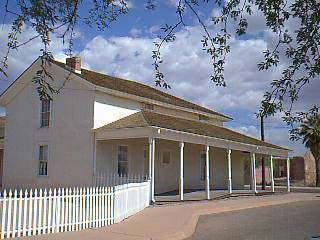
[Source: Associated Press] — To many people living in southeastern Pinal County, the Oracle State Park is a hidden environmental gem that draws the local rural communities together. So concern over its possible closure as part of the state’s attempt to cut a $1.6 billion budget deficit has rippled like a shockwave through Oracle, an unincorporated community 45 miles northeast of Tucson, and the surrounding area. “Oracle is not incorporated; we’re not a town, we’re not a city,” said area resident Julie Szekely. “We have no legal entity to provide things like a place for people to get together and do things as a community… We use Oracle State Park as our neighborhood gathering place.”
The 4,000-acre park was among eight of Arizona’s 27 state parks that officials initially recommended for closure, for a five-month savings of $844,840, because of midyear spending cuts imposed by legislation that Gov. Jan Brewer signed last weekend. Action on the recommended closures has been tabled temporarily as Arizona Parks Board members examine other alternatives, but 47 state parks seasonal employees were put on leave without pay Friday.
The eight parks recommended for closure had relatively low visitation rates. Officially, the Oracle park only reported 9,989 visitors during 2007-08. But the front entrance gate is unmanned, with only an honor system for visitors to pay $6 per vehicle without annual passes. The count likely doesn’t reflect the true number of visitors, more repeat visits by pass-holders and the park’s 125 to 150 volunteers, said Tina Acosta, the park’s assistant manager. Padlocking its gate would trim $116,000 from the park’s budget through June 30.
Acosta said she fears that “the preservation, conservation, educational, and cultural heritage are not being taken into consideration” by bean-counters. “I think a lot of the more rural parks are very connected to the communities,” she said. “The people are more connected to the parks.” [Note: To read the full article, click here.]
